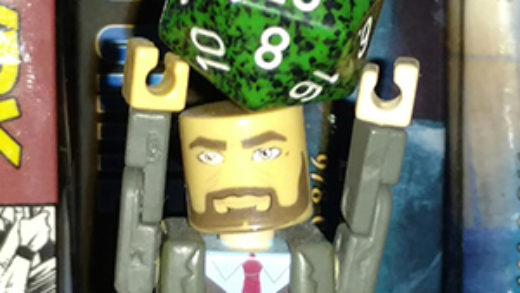For many science fiction RPGs (as well as general media) space travel is practically mundane and more a method to allow the characters to be in a different place for the next adventure. For rarer fiction, space travel itself can be a frightening thing, especially if punching a hole to another dimension to bypass the limitations of faster-than-light travel (FTL). Not to mention the horrors of what exists in the dark space beyond the edges of a star’s light. Here are some of the ways different games and media portray the horror of space travel.
Things That Should Not Be Seen
Keep the view ports closed when traveling through hyperspace or going faster than light, there are visions that can drive characters insane. And try not to mind the hallucinations during travel, you get used to them. Kind of.
Whether it’s a subtle or massive shift in the view of reality, space travel can lead to visions or revelations not meant for mortal minds. The conflict and horror is less physical and more a battle of wills. That is, of course, until a crew member is driven mad by the sights and becomes a threat to those on board.
This type of horror game can be used in any type of sci-fi to add a bit of context to just how alien (pun intended) FTL can be, even those that treat such travel as ordinary. While most of the player characters may be immune, a crew-member or newly-started/discovered cult, may have had their minds twisted during the observations of space travel, allowing for a psychological and physical conflict with people they may have previous dealings. Though rarely used in published scenarios, Traveller treated Jump Space in this way.
Dimensions of Evil
If FTL is accomplished by travel via hyperspace, wormhole, or other method of pushing through the normal realm of spacetime, it’s often likely that the dimensions the ship crosses through is less than friendly. The view itself may drive one insane, but it’s the inhabitants of the “otherspace” that characters really have to worry about. And, should the horrors invade the ship during travel, then they can break into real space.
In a number of modern games, hyperspace is home to eldritch abominations and horrors inspired by H.P. Lovecraft and other nightmares. Warhammer 40,000 is quite explicit about the dark gods and demons that infest the Warp.
The recently released Starfinder puts a bit of a twist on hyperspace travel to allow for multiple scenarios. Instead of hyperspace being a single, if “other,” plane, each jump could go through one of countless dimensions, and every jump through hyperspace leaks a bit into real space. This allows for seemingly mundane travel as well as horror adventures, based on the desires of the GM for a particular jump.
Powered by Hell
A ship doesn’t have to punch a hole in the universe to deal with the evil, chaotic, or incomprehensible; it can simply use that energy to power its FTL. The source of the energy may not even be known. Staying close to the batteries for too long may give characters nightmares or horrifying hallucinations. If the battery is breached, it may open the door for horrors to board the ship.
Even if the game world doesn’t incorporate a “helldrive,” into its canon universe, this type of terror can be utilized if introduced as a new or prototype technology the characters are either hired to test or discover and allows for any number of potential horror one-shot crossovers into a game. Perhaps the new power source turned a ship’s crew into mindless zombie-like foes or alters the very fabric of spacetime around it. The video game series Dead Space uses this idea in an expanded scope, with each Monolith having the ability to power cities with most inhabitants unaware of what can occur if the containment field is breached.
The Void
The game Fading Suns takes an opposite approach to the above. Hyperspace is the safer way to travel from system to system, it’s the creatures that live in dark space that are nightmarish. In that game universe, the jump gates sit at the edge of a solar system, just within reach of the cthulhuian creatures waiting to devour the bodies and souls of those aboard. The video game franchise Mass Effect has its primary antagonists, the Reapers, waiting in the dark space beyond the galaxy for eons before they harvest all space-faring life.
The Void may not even be home to creatures. It, too, can be a cause of going mad by the revelation. In the TV series Firefly it was believed that the Reavers were men driven mad by looking beyond the edge of space. The actual cause of the Reavers’ madness was explained in the movie Serenity and was also debunked by Jayne Cobb in the series itself, “I’ve been to the edge of space. Ain’t nothin’ there but more space.”
Caught in Hyperspace
If the space game in question does not have specific horror elements and the GM does not want to introduce the possibility of eldritch abominations lurking beyond the established universe, then a horror game within a typically non-horror space game could be based on a ship caught in hyperspace or a wormhole. This allows the very physics of the slipstream itself to be a source of tension. That tension may drive crew members to the edge of sanity. While traveling through hyperspace may not be scary, there should be no reason that sitting in hyperspace isn’t.

Recent Comments